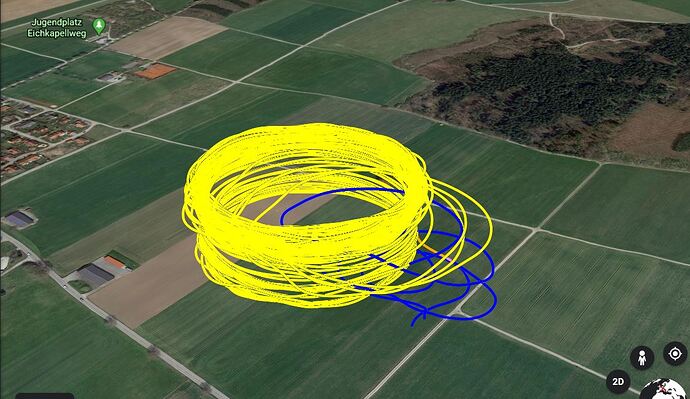Hi,
thanks for your positive feedbacks!
Why is it this plane good at endurance?
1. Propulsion
Of course the complete package makes it.
But the main thing I would say, is to use the propulsion components, motor, ESC and propeller at their most efficent operating point.
The efficiency factor is not a constant, but a curve over several parameters. And every component has it’s own curve(s).
To match them, and operating them all close to their optimum is the challenge.
I learned and measured a lot about these characteristics the last years using a motor testrig.
What helps to operate and optimise propusion is for sure the separated hover and cruise motors.
Like this you can perfectly optimise each one to be optimal at cruise conditions, or hover motors for hovering. You don’t have to do any compromises.
I built several different VTOL concepts the last years.
As my first VTOL plane in 2015 I built a tilt motor plane. Because at first view it seems smart to use the same motors for cruising as for hovering.
I also built a tailsitter, and several different kind of tilt motor VTOLs.
At second view, the more you get into it, and do more dimensioning calculations and optimisations, the more is visible that a tilt motor concept always means a compromise.
Cruise conditions a quite different to hover conditions. You have to choose a point in between, which will never be perfect for both.
Simple example:
Liliums plane shall fly 300km/h, thefore the cruise propulsion propeller stream must be faster, e.g. 360km/h.
For hovering you need more power to carry your weight. Means you get a propeller stream faster than 400km/h during hovering! This will be damn inefficient! A most efficient hover propulsion has large propellers and slow prop stream, more like 20km/h.
What I want to say is:
Simple VTOL concepts with separated hover and cruise propulsion are better than you think at first view!
From my engineering experience I have learned there is never “one best solution”. There is only one best solution for one set of requirements.
Different requirements, different solution. That’s why a bee looks different than an Eta sailplane.
If you use tilt motors, and can adapt them better e.g. by adjustable pitch propellers, the result may look better. E.g. Joby aviation does this.
But in the overall balance you have to calculate the extra weight and effort for tilt actuators and variable pitch propeller actuators.
2. Battery
Obviously high energy density cells are wanted, but often they are limited in the max currents they can handle. If you have inefficient hover propulsion, like many tilt motor VTOLs have, they will consume e.g. 2 times more current than my quite ok good hover propulsion. So you have to use higher power cells with less energy density.
So the efficient hover motors allowed me to use higher energy cells than I could have chosen for a tilt motor VTOL or tailsitter.
3. The plane
An efficient and light plane is essential.
At this part I feel confident, as an aerospace engineer, I’m into product development of “flying things” all my life. Own model plane designs starting at 14, professional kite development for 10 years, hydrofoils for kiting, electric hydrofoils, kiteboards, drones…
Building lightweight structures from fiber reinforced plastics and optimise aerodynamics is where I’m home.
4. Auto-straight propeller device
To align the big hover props straight saves drag obviously.
How much is it really? I did some comparisions on my smaller 5 motor VTOL by hand-launching it with 1. straight props and in comparision 2. all props orthogonal to flying direction.
The difference is significant! From my tests around 10% in cruise performance!
The 4 hours endurance video which I posted was still without the straight-props device.
And it was a windier afternoon than I hoped for. The motor was runnig often many minutes at 3 times the normal cruise power! I thought first this flight would not become too long.
So I’m pretty sure in more calm conditions and incl. the straight-props device it will fly longer for sure.
Yes, it’s a PX4 release version I’m flying, but many parameters tuned in. This took me many weeks, therefore I don’t want to publish my parameters currently.
Is there a way to share a log without sharing the parameters?
I will try to generate and share a KML.
Cheers!
Andi







